Barefoot in Japan: A bumbling fool
Much of the time that I was in Japan I felt like a bumbling fool, and shoes were a big part of it. The Japanese have a lot of rules regarding footwear. Basically, you are expected to go barefoot in Japan pretty much anywhere inside. That was more difficult for me than you’d think.
Disclosure: This article contains affiliate links. If you click on an affiliate link and make a purchase, I will receive a small commission. This will not affect your price.
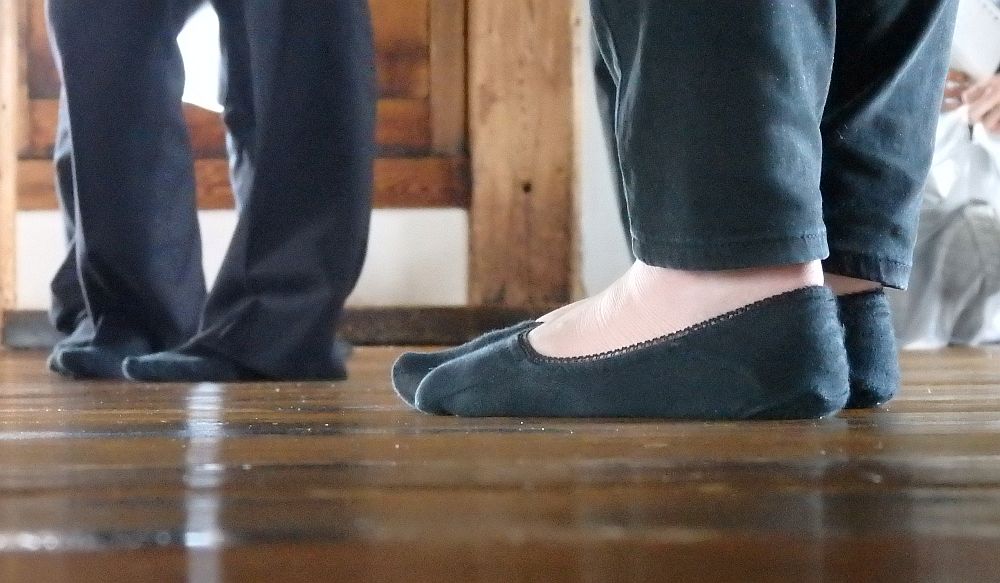
Shoe etiquette in Japan
1. Entering a house
Most houses, and many other buildings like museums and some businesses, have a step up just inside the door. I can step up, of course; that’s no problem. Except one night when I entered a rather poorly-lit restaurant and didn’t see the step up just inside the door. Thump with my toe (ouch!), loud bang, and everyone in the restaurant turns to look at me. How to make an entrance!
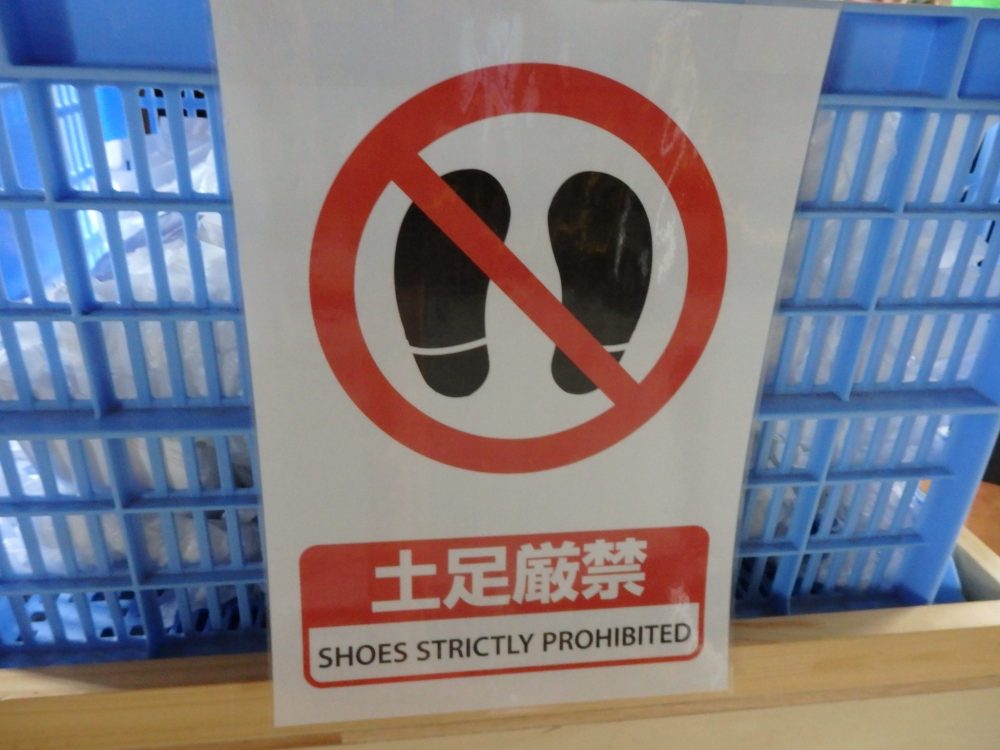
What you are supposed to do as you enter the house is take off your shoes before stepping up. We do that at home as well, to avoid tracking in dirt, so that shouldn’t be a problem, right?
After taking your shoes off in Japanese houses, you put them on a shelf next to the door. Then you put on slippers, which in homes and some museums are provided for you.
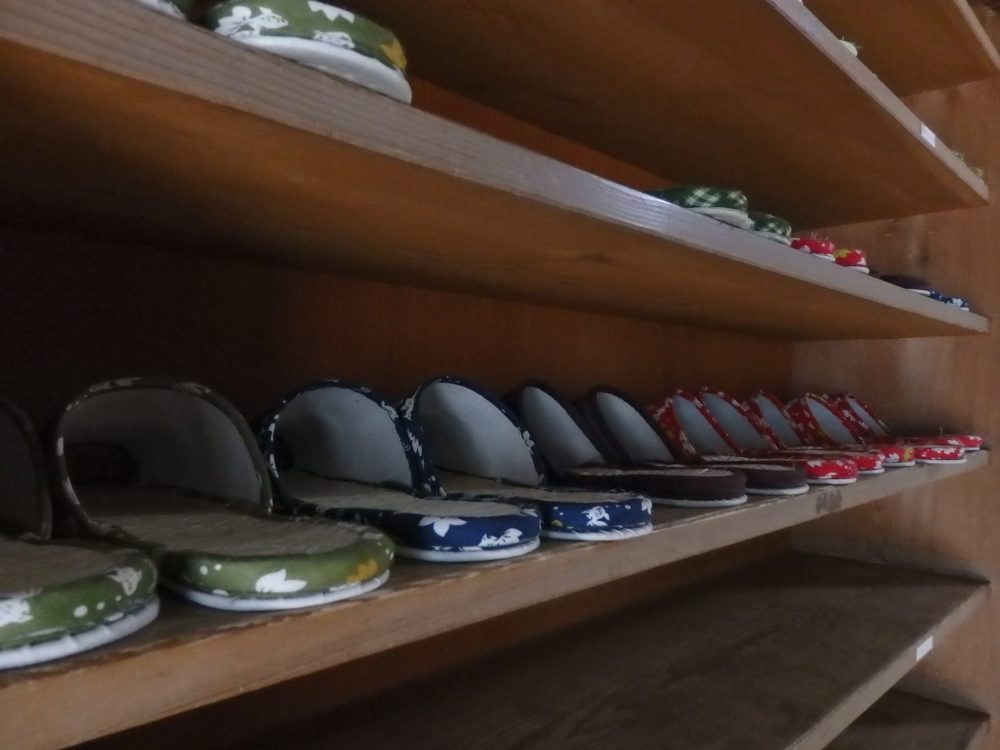
This is where I had a problem. Actually, two problems:
- The slippers often didn’t fit me. My heels hung out over the ends.
- The slippers were scuffs, the kind with no back. The heel, though, was sometimes a bit high, and not very wide. My foot is simply bigger than that, so the slipper was uncomfortable. Not only that, I was constantly on the brink of turning my ankle because my foot fell off the slipper when I tried to walk.
2. After removing your shoes: in the house
So you’ve successfully taken off your shoes and changed into slippers to walk into the house. But wait! If this is a traditional Japanese hotel, called a ryokan, or if it’s a private home, it’s not as simple as that. Any rooms with tatami mats on the floor are off limits to slippers. You have to take off the slippers outside the door and go barefoot or in your socks.
I had trouble here too: I simply forgot. If I was wearing slippers, I just couldn’t seem to remember to take them off. I would step inside, onto the tatami mats. At some point I would realize what I’d done and scurry back to the sliding door to place the slippers outside.
Then, leaving the room to go to the toilet, for example, I would forget about the slippers and walk right by them, barefoot down the hall.
3. In the bathroom
Even if you do remember to put the slippers back on, things get more complicated in the bathroom. Opening the door, you’ll see a different pair of slippers, usually plastic, inside on the floor. There’s only one pair this time, since only one person uses the toilet at a time. (In some public restrooms in museums, you’ll see a row of slippers here too, just like at the front door.) The deal here is that you’re supposed to take off your house slippers, leaving them in the hallway, and step into the toilet slippers.
Once you’ve done your business (which might take a while given all of the toilet options you have, but I’ll save that for another post), you are supposed to step out of the toilet slippers to leave them there for the next person, and then step into your own again.
I didn’t even once remember to do that on first stepping out of the toilet. Without fail, I would be halfway down the hall before I remembered that I was supposed to leave the toilet slippers in the bathroom. I would hurry back, hoping no one saw me, and quickly trade slippers.
You might also enjoy the following articles:
4. In public places: taking shoes off in Japan
These customs aren’t just for at home. I visited quite a few historic buildings while I was in Japan, and usually I had to do the same thing there. Some supplied slippers, some didn’t—which I preferred because then I could acceptably go barefoot. In some, I was handed a plastic bag and expected to place my shoes in the bag and carry them along with me. This was necessary because the entrance and exit were in different places.

Other general bumbling
So far, I’ve only talked about going barefoot in Japan. There were plenty more things that kept me bumbling:
- Ordering and eating food in restaurants. The first time I had cold soba noodles, I thought the warm liquid in a bowl next to the noodles was some new sort of drink. I realized at a later meal that it was sauce, and I was meant to dip the noodles into it. And that wet napkin I was given with my meal: was that meant for during the meal or after I was finished?
- Garbage. Finding a place to put wrappers, empty bottles or any other garbage is a challenge in itself. When you do finally find a bin, it’s actually a row of bins with labels, only sometimes translated into English. I thought “plastic” meant all plastic at first. I was wrong. Plastic bottles, clean plastic and combustible plastic (whatever that means) all go in different bins.
- My sheer size. At 5’7” (about 170 cm), I’m tall for a woman in Japan. I’m taller than many men as well. As for weight and bulk … well, I’m also much bigger than most Japanese men and women. So when I was moving among Japanese people, I took up more than my share of space. I filled the seat in the train, while the person next to me generally didn’t, or could they have been attempting to shrink away from my overwhelming presence? That’s how it felt, often. On the metro, whenever I stood up to get off at a station, I would bump my head on the straps that hang above the seats for standees. And I mean Every. Single. Time!
- Escalators. The Japanese generally line up on one side of the escalator, but there doesn’t seem to be any rhyme or reason to whether they all stay left or all stay right. One time I was leaving a train at rush hour and a huge number of people lined up (on the left this time) to take an escalator up. Nevertheless, they lined up single file, despite the fact that the escalator had enough room for people to go two by two. Seeing that empty right side, I went ahead and stepped to the right. Others followed me, but was I committing some sort of faux pas by doing that? Did the right side have to be left empty just in case someone was in a hurry?
- Language. I don’t speak or read Japanese, and I don’t think anyone really expected me to. But there’s nothing like being completely illiterate to make a person feel stupid.
So you can see why I felt like a bumbling fool most of the time. I never seemed to do anything right, or at least I felt that way.
At this link, Japan-Guide.com, you can read all about the rules of Japanese etiquette.
You can book your hotels through this booking.com link.
Have you had similar experiences on your travels? How did you deal with going barefoot in Japan and the unfamiliar shoe etiquette in Japanese homes and hotels? I’d love to hear about it! Leave a comment below.
If you enjoyed this article, please share it!
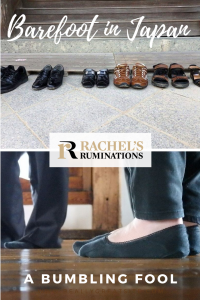



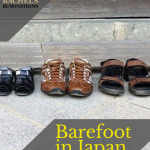

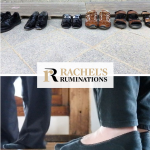
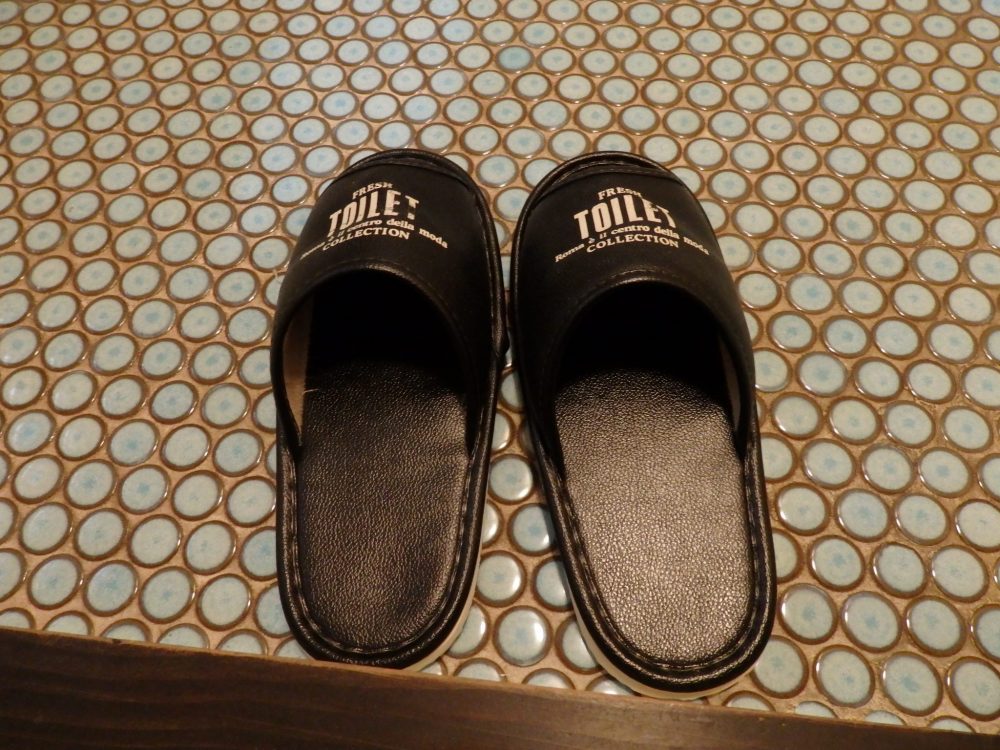

We go to Japan every year and have learnt to take shoes that are really easy to take off and put on. However, in saying that, I still forget; especially the toilet slippers.
Glad to hear it isn’t just me! You’re right about wearing shoes that are easy to put on and take off. Fortunately, I had a pair of simple sandals with Velcro closures.
Hi Rachel. Living in Korea,I’m used to the shoe etiquette. However, the Japanese take it to an entirely different level. The one thing I’ve never gotten used to here is Korea is taking off my shoes in a restaurant and then sitting on the floor to eat. I always try to bring socks (which is acceptable), but have often been caught without them. To me, at least, it doesn’t seem very hygienic to sit on the floor with bare feet (Korean restaurants don’t usually provide slippers) so close to the food. I think it’s also the North American thing of most restaurants not allowing you in with bare feet!
Yes, I noticed that in Korea, but all the restaurants I ate in had a choice: take off your shoes and sit on the floor at a low table or keep them on and sit in a chair at a high table. I always chose the chair because of my general awkwardness with sitting on the floor and, especially, with getting up again!
Oh dear! I would definitely be a bumbler, too! Do the Japanese carry their own slippers, sort of like the Chinese carry their own chopsticks? I’m not liking the idea of using slippers that have been on many feet.
No, they use the ones provided, and I didn’t like the idea of sharing them either! When I had a choice, I just went barefoot, and no one objected.
It is easy to feel like a fish out of water in Japan. One thing though, we could always spot each other in a crowd.
Definitely true! Thanks for commenting!
Hi Rachel. Sounds like quite the adventure .., and the ordeal regarding the shoes! You really have to be on your toes to avoid being a bumbler!
Oh yes, bring on the puns! Best foot forward?
The word AWKWARD comes to mind! Whenever I feel like I’m sticking out like a “sore thumb” I just try to smile my way through the situation. Despite feeling like a “left foot” I imagine you had a great time and saw and learned so many things. I’d love to see Japan so I’ll be reading your future posts and learning about the customs for when we get a chance to visit..
Yep, lots of smiling apologetically! I tried often to simply ask what the custom was, but so few people in Japan spoke enough English to do much but try to use hand gestures. It was a fun challenge, though!
Cute and helpful post. I don’t like the “share the slippers” idea at all. However,I am a rule follower, so I am sure I would obey.
Me too! I really tried to obey. I’m just forgetful!
The thing with hardly any trash cans in public is that you are not supposed to walk around eating—-not even an ice cream cone. We learned that when we bought one and the woman at the stand where we bought it glared on us and ordered us to stand there to eat it. That’s when the lack of trash cans started to make sense. And, obviously, given the emphasis on propriety in the Japanese culture, no one would even dream of littering.
Yes, I thought of that, but I did see Japanese people walking around with food or drink, especially things like iced tea and smoothies in plastic cups. Do they just carry them along with them till they get a chance to throw them out? That’s what I ended up doing.
I love the post Rachel and even though I really shouldn’t laugh, it is quite funny. I can just imagine your tall self trying to squeeze into teeny tiny slippers!
Have I had similar experiences on my travels? Absolutely. Especially where the toilet situation is concerned. I remember going to a developing country for the very first time when I was about 13. My parents wanted us to experience a more rural atmosphere as we were all in private (independent) schools.
I wanted to go to the bathroom. I was desperate to do a number 2.
There was a bucket filled with water. I didn’t know what to do with it.
So I pooed in the bucket!
Everyone found it hilarious and unfortunately, they still talk about it.
When I was in the Peace Corps in Malawi I heard a story of a volunteer who didn’t know how to use the hole-in-the-ground kind of toilet. He sat down on it instead of squatting, and his keys fell in! They had to dig the whole thing out to get them back! Now that’s embarrassing!
I haven’t written my post yet about the Japanese toilets, which are a whole other story, with all sorts of buttons, usually without English translations…
Dear Rachel, I attached your blog to my recent blog as a fine example of a post.
You find our meeting on this recent post of mine.
http://rundumdenglobus.com/en/2015/08/23/japan-otsu-airbnb/
I hope you enjoy it.
Best from Down Under
Wolfram
Thanks, Wolfram! It was nice meeting you in Otsu, Japan!
There is a small persentage of people around the world who prefere to go barefoot outside. Is it even possible for them to somehow exist in Japan with such a strict footwear etiquett? If the point is to keep the house clean how can they take of… naked skin to get in?
That is a very good question, and I don’t have an answer! I suppose you could keep a cloth by the door and give your feet a wipe before you put on the slippers.